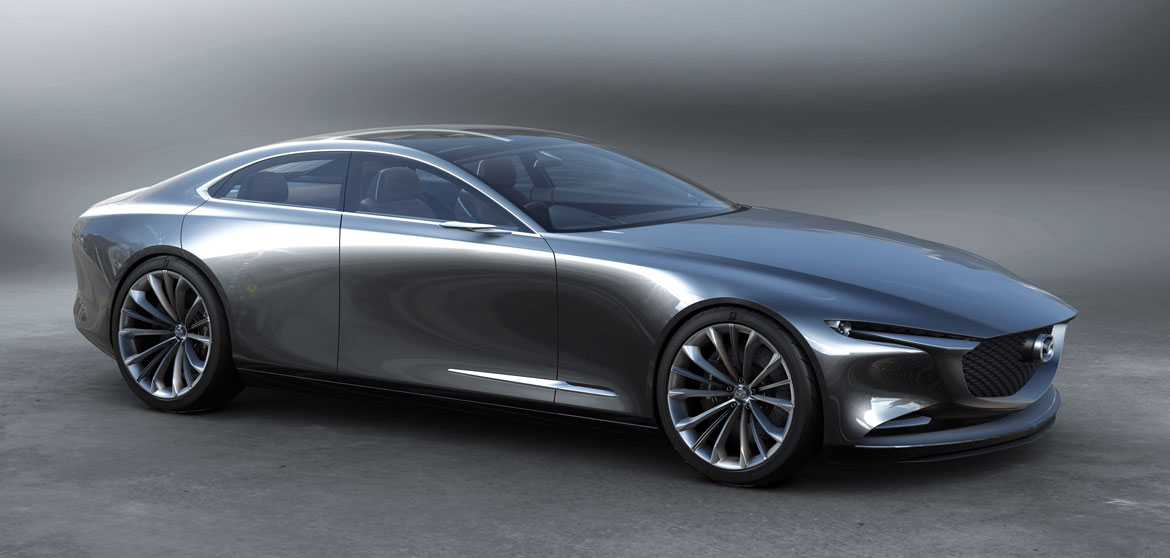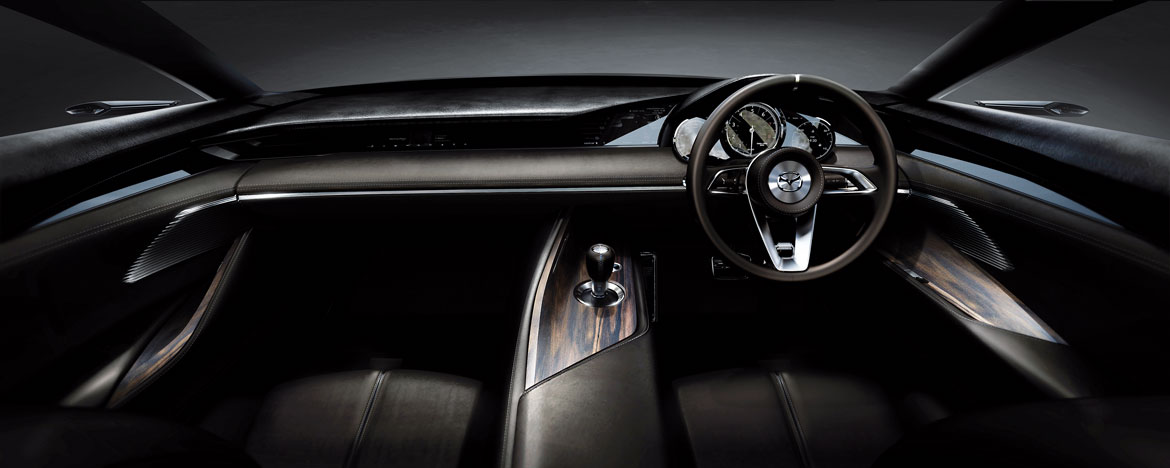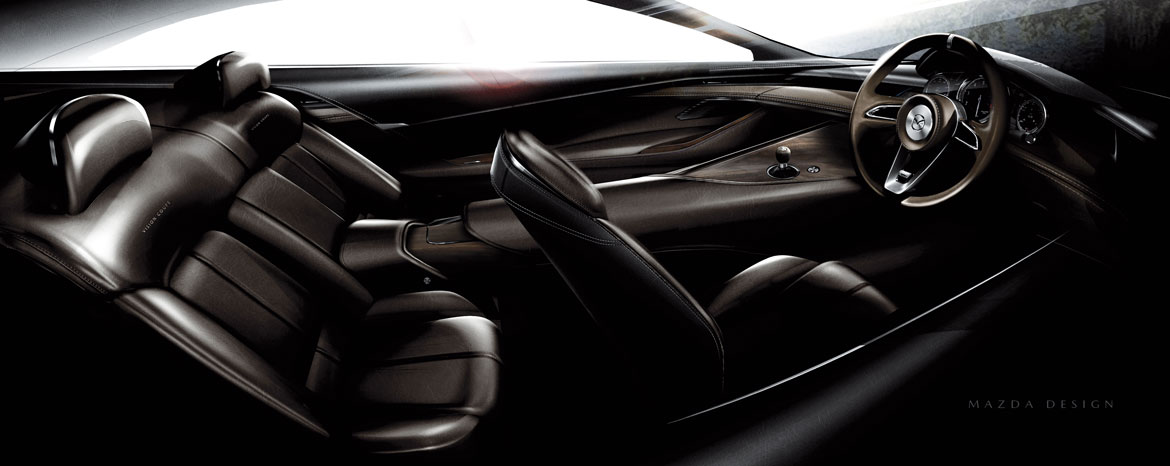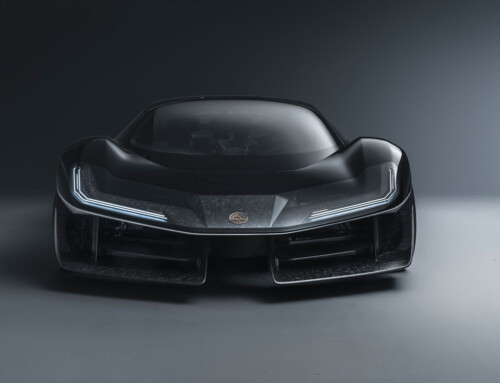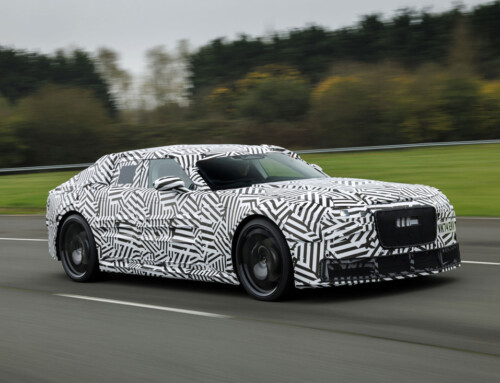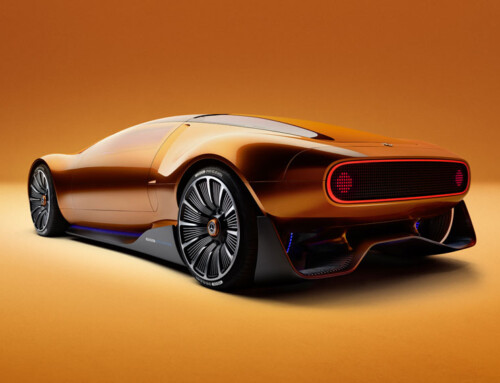As we stood in front of that dark, squat silhouette concealed under an impenetrable sheet, every one of us was impatiently counting the seconds until the moment when the speeches came to an end and we could finally see the latest iteration of the Hiroshima-based brand’s style in its full glory, the Mazda Vision Coupé Concept. The event was a one-off Design Night held by Mazda especially for its latest creation, the day before the Tokyo motor show was to begin. All of a sudden, I heard a voice whisper in my ear: “look at it from the front three-quarter angle, that’s the best view in this light”. The voice belonged to Mazda Europe chief of design Kevin Rice, who still remembers the Italian he picked up when he worked at Italdesign in the late 1980s. I followed his advice, and much of the philosophy embodied by this four-door coupé became clear.
This is because the design of this car, with its uncommon capacity to elicit admiration at first glance, is fuelled by reflections, and by distinct patterns of light dancing on the metal and over curves with unexpected radii. This effect is so strong that, in some images, the bodywork actually seems to take on a curious two-tone appearance generated solely by the way light bounces off it, and by the deep chiaroscuro contrasts breathing life into the metalwork.
The overall impression is one of extraordinary visual purity far removed from the rather contrived complexity of certain rivals and which, however, was anything but simple to achieve. “As we always do at Mazda, we started from a hand-sculpted block of clay. Each time a modeller added a seemingly pleasing curve on the matte medium, we had to scan it digitally and transform it into a mathematical model so we could simulate the reflection it would generate. We went back and forth like this endlessly, going back to the sculpture and then onto the computer again, until we achieved the result we wanted. It was an incredible amount of work, and it took us a whole two years to define and finish the completed show car”.
Together with the 2015 RX Vision, the Mazda Vision Coupé reveals the future direction of Kodo Design, which was originally introduced in 2010 and has since evolved and matured with more deeply intersected essentiality and dynamism, minimalism and perceptive sensitivity. But there’s even more to this concept, which also draws influence from a profound source: the ancient Japanese art of striking balance between full and empty spaces, and between formal tranquillity and focal points of attention. This is the very same philosophy, for example, which defines the empty, pure spaces in a Zen garden.
But while emptiness and the absence of decoration carry immense cultural weight in Japan, putting them into practice in an automotive application soon proved to be challenging: “We had to work in close collaboration with the engineers to make it possible to open such convex doors. These surfaces also invert the images they reflect, and this can pose another aesthetic problem. And, no less importantly, undulating surfaces really have to be defined with extreme precision: all it takes is to put a little too much energy or sensuality into a line, and you ruin everything”, explains Rice.
So will all this hard work be rewarded by Mazda engineering the car for production and launching it onto the market? “I can only hope, that’s all”, is Rice’s laconic official response. I can only say that I also share his hope.
Full article in Auto&Design no. 228















